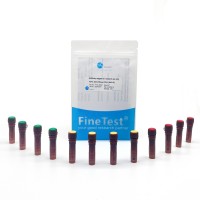Assaying Chemotaxis of Dictyostelium Cells
互联网
738
Both prokaryote and eukaryote cells can sense and move up chemical concentration gradients (chemotax). As a means of finding food sources during vegetative growth, Dictyostelium discoideum naturally chemotaxes toward chemicals released by bacteria. As part of its developmental life cycle, D. discoideum chemotaxes towards cAMP. This chapter describes protocols for using Dictyostelium to understand the cell biology behind and the signaling events necessary for eukaryotic amoeboid chemotaxis. The chapter includes analyses of random cell motility, directed motility up chemical gradients, cellular responses to uniform chemoattractant exposure, and the utility of fluorescent probes for chemotaxis signaling events. Random cell motility in the absence of chemoattractant is analyzed to decipher the properties of self-organizing pseudopodia extension and retraction. Monitoring chemotaxis toward cAMP and folate allows the determination of signaling events required for sensing a chemical gradient and moving in a directed, persistent manner up the gradient. Uniform chemoattractant exposure is employed to elucidate the immediate intracellular responses to chemoattractant stimulation. Finally, analyzing cells expressing fluorescent fusion proteins is vital to elucidating the location of signaling events during chemotaxis.








